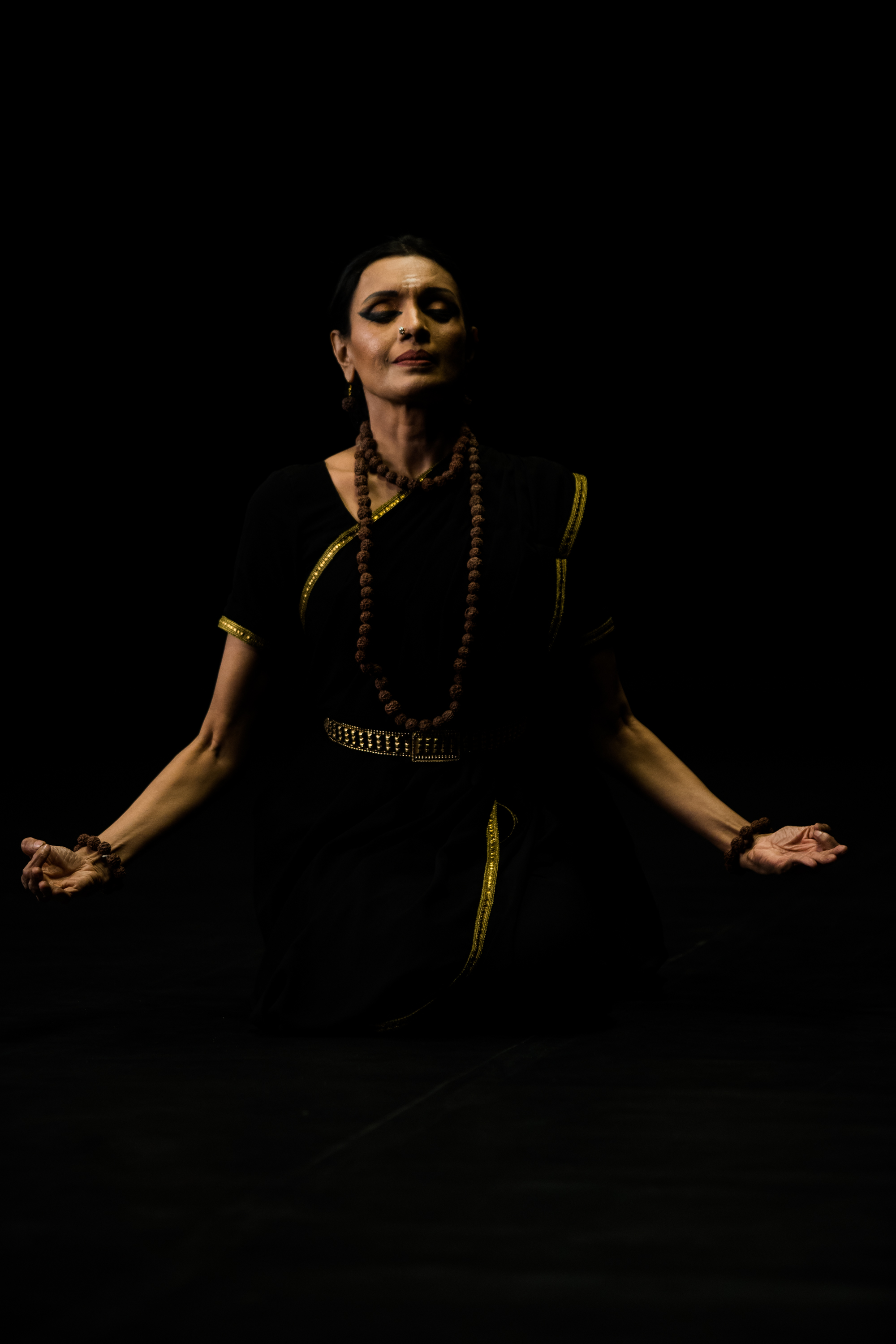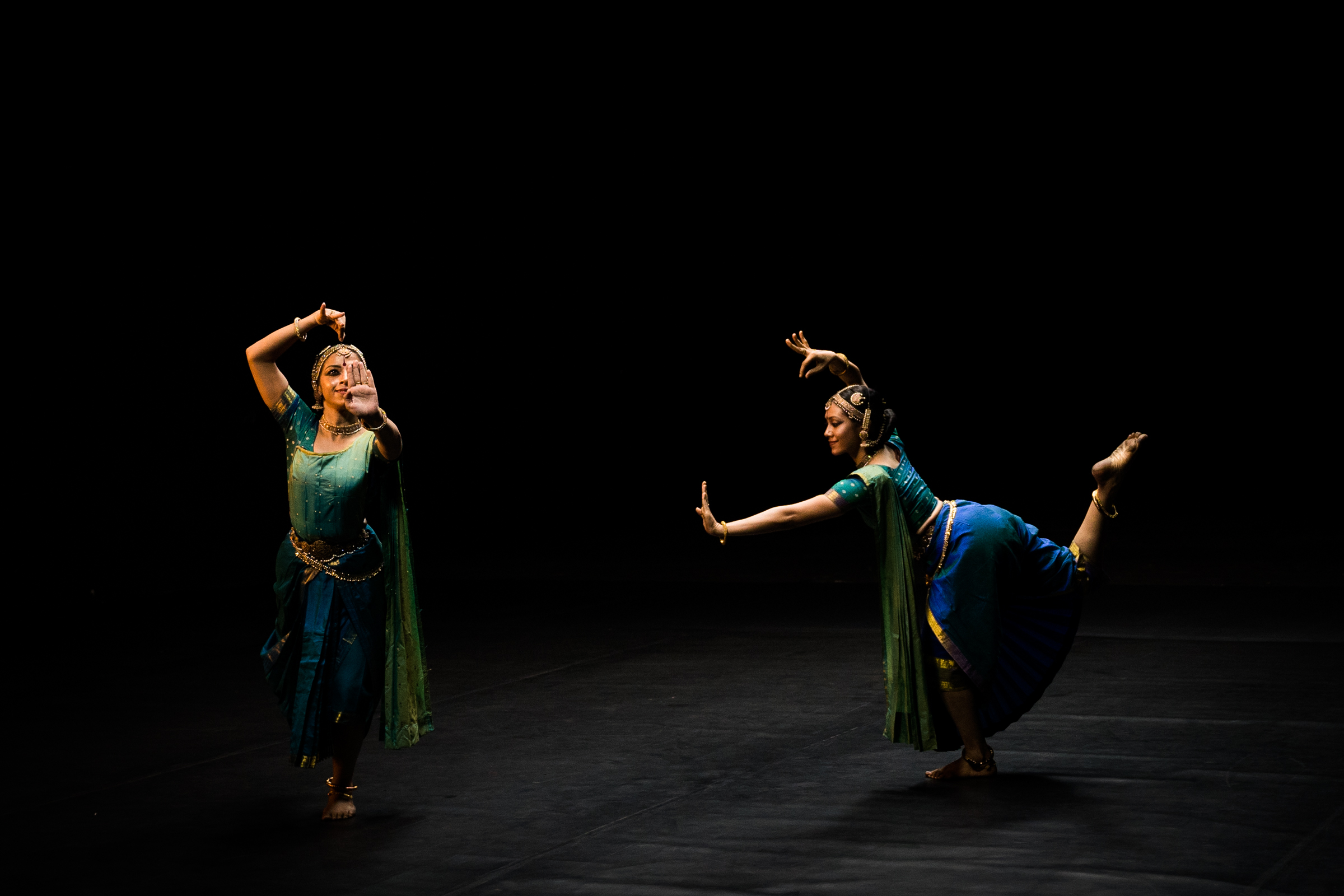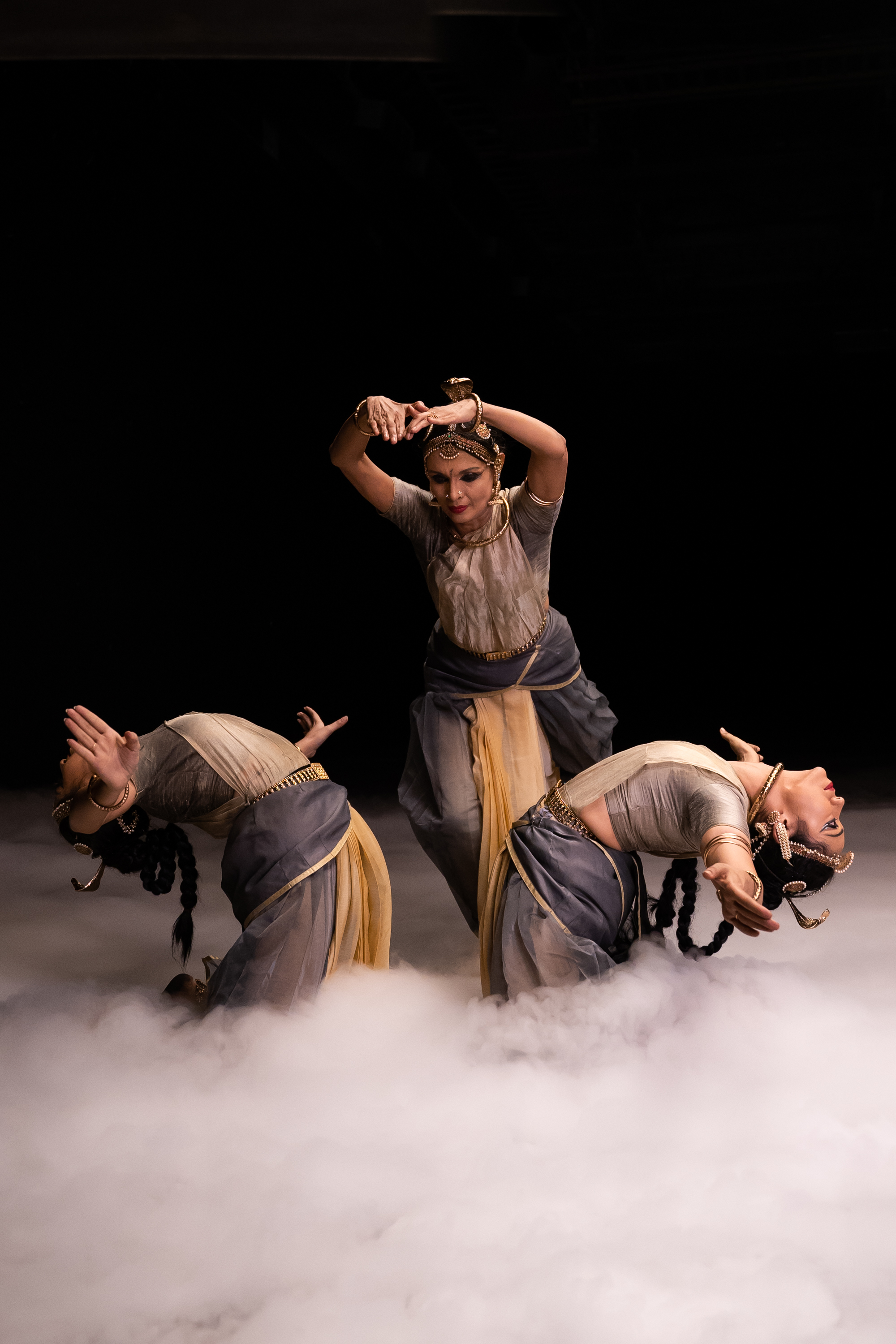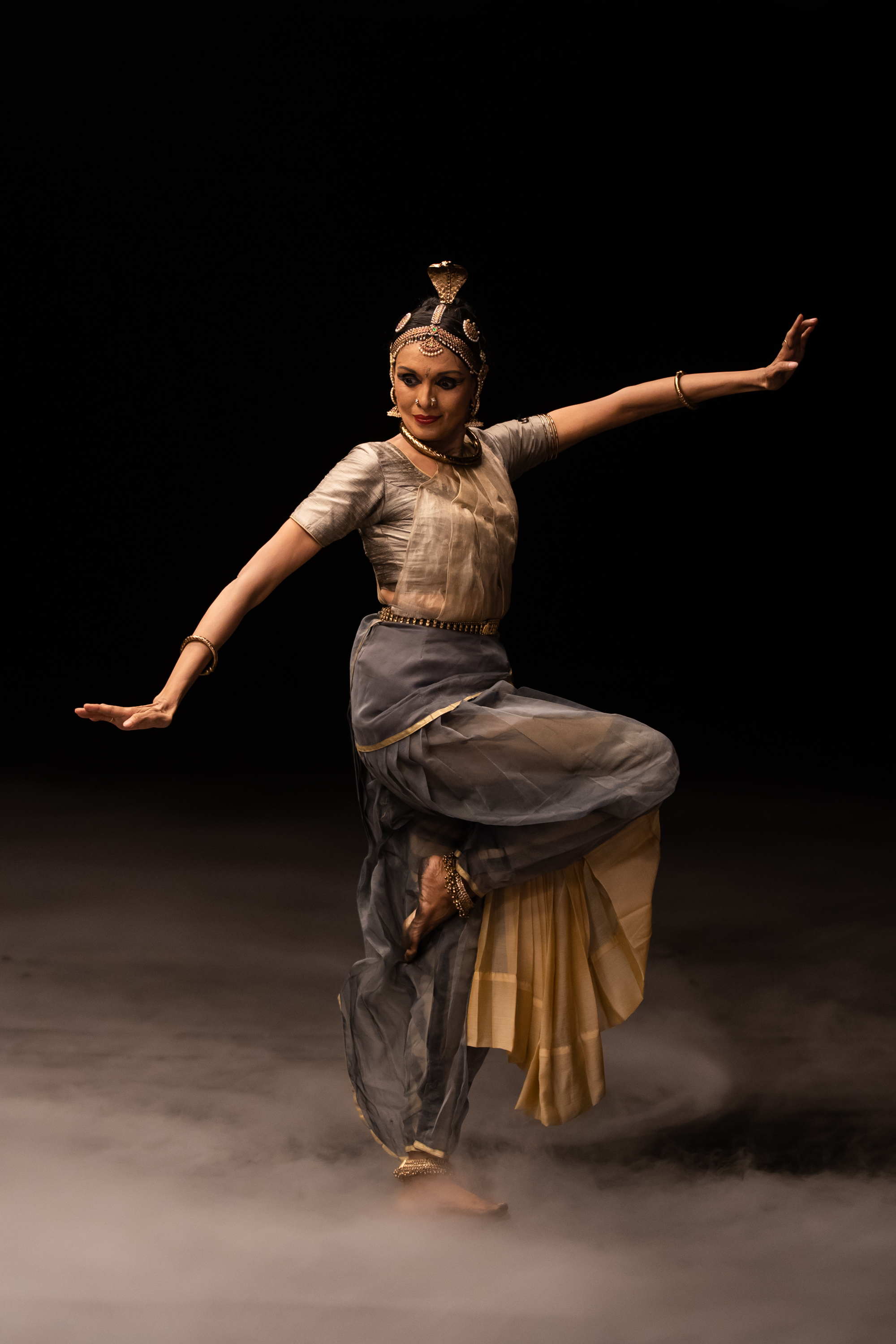One of India's most prolific Bharatanatyam dancers, Priyadarsini Govind is bringing her magnum opus to Singapore. In collaboration with Esplanade and Apsaras Arts, she is all set to screen 'Yavanika', a dance film, during the 10th Indian Performing Arts Convention (IPAC).
'Yavanika' explores the concept of the body through the philosophies of seer-poets in India. The body is seen as comprising the five natural elements, and as a vehicle that carries the soul through its journey in life.
The production, set to be screened tomorrow at the Esplanade Recital Studio, uses the poetry of Jayadeva, Kabir, Pambatti Siddar, among others, composed of music by Dr Rajkumar Bharati, choreographed and performed by Priyadarsini Govind, with features from Apoorva Jayaram and Shwetha Prachnade.
A graduate in commerce from the University of Madras, Chennai, Priyadarsini holds a Diploma in Mass Communication. However, Bharatanatyam is her first love and has been since she was only six years old. Here are excerpts from her exclusive chat with Connected to India.
Connected to India ( C to I): What motivated you to create Yavanika? What was your inspiration? Walk us through your process, from how you got the idea to the concept evolving, the director’s vision and what it was like to dance for the camera.
Priyadarsini Govind: I had been wanting to work on group production for some time. Last year, I was supposed to present a group production at DIAP but it didn't happen. Always a soloist and dual
For Yavanika, I started with different concepts and ideas, including Kabir’s Jheeni. The song posits that our body is like a cloth that shrouds the true nature of our soul. Slowly, the concept behind my show also came into play. Yavanika is a screen made of the concept of Maya (illusion) composed of five elements within and without. Through the show, I explore the theory that our body is a screen in which Alaripu (energy) goes through the cycle of life, and Samsara (reincarnation) is a deliverance from the Maya of life. I also explore the Thillana aspect, where, by literally dancing out of your body, you achieve Shokla and return to the Maker, breaking out of the cycle.
I am not new to camera performances, as I have created a lot of recorded shows and do a lot of work online. I make a deliberate choice to not just plan a dance performance but through the eyes of a cinematographer. There is no end to how to capture dance on camera and, using one camera going around, we can attract viewing eyes to certain moves.
I tried not to interfere with the compositions and without too many cuts or aspects we don’t see easily on stage. The filmmaker and cinematographer watched rehearsals and understood the dance being performed and married both the dancer’s vision and camera’s vision of the output.
C to I: What do you think about programmes like IPAC in keeping Indian arts and culture thriving outside of India?
Priyadarsini Govind: Art has no geographical boundaries. It doesn’t matter which part of the world this is organised in. IPAC makes programming and resources available to students that broaden their vision and allows different cultures to permeate through. Yavanika came to be created because of IPAC. It was a trigger incentive and platform to try out new things. Knowledge is essential for dancers and trying to provide varied experiences and resources is what is unique about IPAC. Aravinth is very tuned in to what artistes and students need. IPAC highlights the concept that for evolution of art, the location no longer matters. IPAC provides vision, access, resources and organised opportunity to students and artistes, which is important for arts.
C to I: As a mentor in IPAC how do you connect/ engage with the younger generation and how do you feel about the potential of Singapore artists?
Priyadarsini Govind: Mentoring is a fantastic experience because the way of guiding the journey of an artiste lies not in teaching them what to do or choreograph for them, but in helping them discover and channelise their creative thoughts. Help them find in themselves what they are capable of.
Young dancers of Singapore are fantastic at developing their own kind of concepts and movements, which is not easy to do. Fleshing out a concept, visualising and giving movement, delivering your baby all requires commitment and resilience. Whatever the facilities and resources provided, a majority of the work has to be done by the young artiste themselves. All the girls have been different; very committed on this emotional journey. They have experienced self-doubt, frustration, discovery of how to go from one act to another. It has been a huge learning and privilege to be with them.
C to I: What is unique about Yavanika, and about blending seer-poetry with classical dance?
Priyadarsini Govind: This has been an attempt to blend what you can see on stage and what a camera can show. Without taking away from the in-person experience, we are trying to utilise the advantages we have with technology. It just so happened that compositions of different languages have been used; philosophical and Samsara – life on earth, among them. Parts of everyday life which we find very real and the seer’s questioning on life and reality led to a variety in our approach which we put to camera.
C to I: Why is it important for you to make this film at this point in your career?
Priyadarsini Govind: I’m not looking at points in my career. Different times bring out a trigger and opportunity. I always wanted to do this sort of showpiece; it had been in my mind for sometime. IPAC and Aravinth provided the base for it.
C to I: You are a highly trained classical dancer and mentor. What would be your advice to potential dancers just getting started on their path or planning a similar initiative to yours?
Priyadarsini Govind: Hard work, the right kind of direction – stimulating direction, being able to seek out teachers who point you and inspire your growth as an artiste are important. Always being able to accept that there is something to learn and there is never a point where you know everything is the biggest challenge for young people. Even if they learn a little, they think they know everything. I think it comes from ignorance and sometimes from wrong guidance. Be open to new experiences, vulnerable to change, adopt and adapt. Understand there are no shortcuts to training and hard work.
C to I: The COVID pandemic has overturned most conventions and normality for live performances. How is rasa, a basic element in a performance achieved in a digital performance?
Priyadarsini Govind: Rasa is not only for us in person. When we see a film we also feel rasa. Dancers need to understand that we can experience and transmit that energy through the screen. Online has come to stay and its accessibility has significant advantages. When we teach now, we need to plan from the perspective of how to ignite understanding among students learning online. It’s a work in progress and an understanding. In person, you get an immediate response from the audience. In an online experience, we don’t have that clarity and don’t fully know what the audience feels. And that is something we need to work on, which I feel will take time.
C to I: What has been your experience of the pandemic affecting the performing arts calendar? What are your expectations of everything returning to the way it was before?
Priyadarsini Govind: Don’t think anything will return to the way it was before. How it will work out in the future, I don’t know. I don’t know how it will play out. You can’t wipe out in-person performances, as they are a very important and irreplaceable part of artistic experiences. On the other hand, online experiences like teaching, performing are here to stay as well. How they will evolve remains to be seen. I really learned a lot and had to adapt because of circumstances in the past 18 months.
Otherwise, I would not have gone online as I had never subscribed to it ever before. Just doing it and how to apply the tech effectively has been a great learning and a journey of discovery for me. Being able to learn and work without getting out of the house has been a pleasant change and a new experience as I was usually on the road. I feel that this learning has been enriching and increased my understanding of how one views art and how society views art. the pandemic has had a great impact on how we behave and think. Art should be made a very important part of everyone’s life. Audiences turn to art when everything else is provided for. Art should be something one turns to in challenging times both in society and psychologically. Art is the first thing to be affected and art seems remote when life is difficult.
C to I: What would you say to fans who have been deprived of cultural performances due to the pandemic?
Priyadarsini Govind: I hope in-person performances happen soon. Really hope things open up. I too want to sit in a live audience. I miss the sheer energy and collective response of the audience instead of being alone on screen. We should seek the opportunity provided by IPAC and Esplanade should grab every opportunity.
C to I: On 10 years in IPAC and bringing this film.
Priyadarsini Govind: This has been a fantastic milestone; Angkor has been a huge production one can only dream of doing. Going to Cambodia, working on the atmosphere, teaching different students and the sheer magnitude of different elements were fantastic experiences. By teaching, you learn a lot and lecture demonstrations were something new I ventured into. DIAP-IPAC has pushed me to work on things that would have taken longer to do on my own. Yavanika was a dream I dared to dream because of IPAC and Aravinth.






